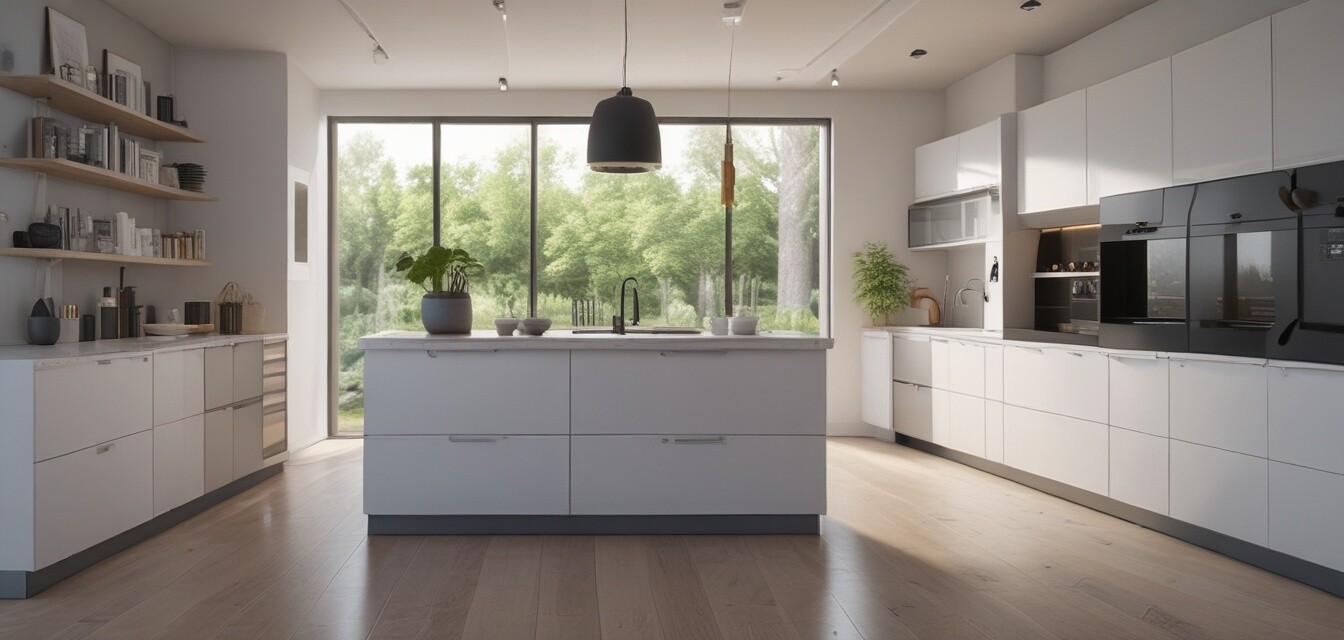
The intersection of smart homes and energy efficiency
- The integration of smart home technologies can significantly enhance energy efficiency in various appliances.
- Smart thermostats, lighting systems, and energy monitors can optimize home energy management.
- Adopting energy-efficient appliances not only reduces energy consumption but can also lead to significant cost savings.
- Investing in smart technologies contributes to sustainability by minimizing overall carbon footprints.
- Staying informed about trends in both smart home technology and energy efficiency can empower consumers to make smarter purchasing decisions.
The rise of smart home technologies has revolutionized how we interact with our everyday appliances and energy consumption. As the world increasingly turns toward sustainability, the integration of smart devices with energy-efficient appliances has emerged as a critical factor in home management. This article delves into the relationship between smart homes and energy efficiency, highlighting current trends, innovations, and tips for maximizing energy savings.
Understanding the smart home ecosystem
A smart home is defined by its use of interconnected devices that communicate with each other and the homeowner through various technologies. The core components typically include:
- Smart thermostats
- Smart lighting
- Smart appliances
- Energy monitoring systems
- Home security systems
The role of smart appliances
Smart appliances are designed to work seamlessly within the smart home ecosystem. They offer enhanced functionality that helps homeowners monitor and control their energy use more efficiently. Examples include:
| Appliance Type | Smart Feature | Energy Efficiency Benefits |
|---|---|---|
| Refrigerators | Remote temperature monitoring | Reduces food spoilage and optimizes energy usage. |
| Washing Machines | Load-sensing technology | Adjusts water and energy consumption based on load size. |
| Ovens | Wi-Fi connectivity | Preheats remotely, saving time and energy. |
| Dishwashers | Smart scheduling | Operates during off-peak energy hours for savings. |
Benefits of combining smart technology with energy-efficient appliances
Investing in smart technology coupled with energy-efficient appliances brings numerous advantages, including:
Pros
- Improved energy monitoring and management
- Decreased energy bills due to optimized usage
- Enhanced control over home environment
- Convenience through automation
Cons
- Initial investment costs can be high
- Dependence on a stable Wi-Fi connection
- Potential privacy concerns with data collection
Key technologies driving energy efficiency
Several innovative technologies are aiding homeowners in optimizing their energy efficiency:
- Smart thermostats: Automatically adjust temperatures based on user habits.
- Energy monitoring systems: Provide real-time data on energy usage and savings potential.
- Smart lighting: Enables remote and automated control to reduce energy waste.
- Home automation hubs: Centralize control and enhance the interconnectivity of devices.
Trends in energy-efficient appliances and smart homes
As consumer demand for sustainability grows, manufacturers are responding with more energy-efficient products that incorporate smart technologies. Some current trends include:
| Trend | Description | Impacted Appliances |
|---|---|---|
| Increased IoT compatibility | More appliances will feature IoT integration for better communication. | Washing machines, refrigerators, lighting systems |
| Enhanced AI capabilities | AI features will predict energy usage patterns for improved efficiency. | Smart thermostats, home energy management systems |
| Focus on renewable energy sources | Integration with solar and wind energy systems is becoming more common. | All energy-consuming appliances |
Maximizing energy savings with smart technology
Homeowners can take the following steps to maximize their energy savings when integrating smart technologies:
Tips for beginners
- Start with a comprehensive energy audit to identify high consumption areas.
- Gradually introduce smart devices, beginning with essentials like thermostats and lighting.
- Leverage smartphone apps for monitoring and automation capabilities.
- Explore energy-efficient appliances that are compatible with smart systems.
- Stay informed about new products and technologies that enhance energy efficiency.
The future of home energy management
As technology continues to evolve, the intersection of smart homes and energy efficiency will likely deepen. Consumers can anticipate:
- Advanced features in appliances that further reduce energy consumption.
- Widespread adoption of energy-efficient systems powered by renewable energy sources.
- Integrated smart home solutions that provide seamless user experiences.
By staying informed about the latest news and trends in both smart home technology and energy-efficient appliances, consumers can make better purchasing decisions that not only save money but also contribute to a more sustainable future.
For more insights on energy-efficient appliances, explore our Air Conditioners, Dishwashers, and Refrigerators.
